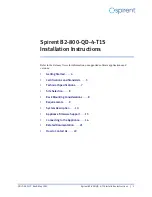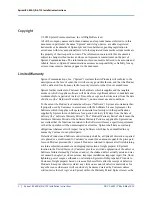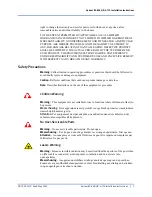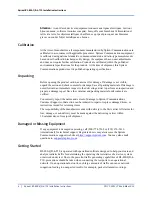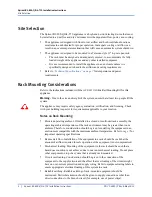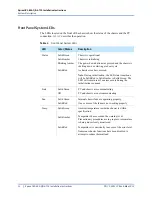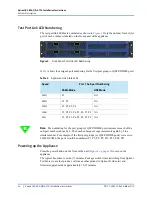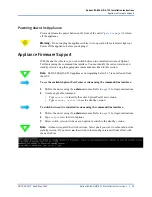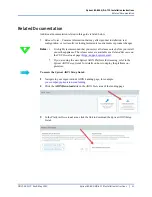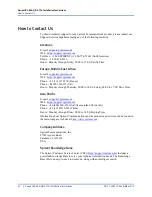
Spirent B2-800-QD-4-T1S Installation Instructions
Site Selection
8
|
Spirent B2-800-QD-4-T1S Installation Instructions
PN 71-009377 Rev A May 2022
Site Selection
The Spirent B2-800-QD-4-T1S appliance is a high-end network testing device that must
be installed in a dust free and dry environment with adequate airflow, power, and cooling.
•
The appliance is designed with front to rear airflow and both ventilation locations
must remain unobstructed for proper operation. Inadequate cooling or airflow can
result in an over-temperature situation that will cause an automatic system shutdown.
•
The appliance is designed to be mounted in a Telecom-style 19" 4-post open rack.
•
The rack must be designed, and adequately secured, to accommodate the fully
loaded weight of the appliance and any other installed equipment.
•
It is not recommended to install the appliance in an enclosure unless it is
specifically designed to handle the airflow and cooling requirements.
•
Refer to
“Technical Specifications” on page 7
for temperature and power
requirements.
Rack Mounting Considerations
Refer to the instructions included with the ACC-6111A Slide Rail Mounting Kit for this
appliance.
Warning:
Due to the size and weight of the system, ensure that at least two people lift the
system.
The appliance may require safety agency evaluation, certification, and licensing. Check
with your building inspector for requirements applicable to your location.
Notes on Rack Mounting
•
Elevated operating ambient–If installed in a closed or multi-unit rack assembly, the
operating ambient temperature of the rack environment may be greater than room
ambient. Therefore, consideration should be given to installing the equipment in an
environment compatible with the maximum ambient temperature. Refer to
for
important operating specifications.
•
Reduced air flow–Installation of the equipment in a rack should be such that the
amount of airflow required for safe operation of the equipment is not compromised.
•
Mechanical loading–Mounting of the equipment in the rack should be such that a
hazardous condition is not achieved due to uneven mechanical loading. Do not place
other equipment on top of a system that is already rack-mounted.
•
Circuit overloading–Consideration should be given to the connection of the
equipment to the supply circuit and the effect that overloading of the circuits might
have on over-current protection and supply wiring. Refer to equipment rating labels to
ensure appropriate electrical loading of this system in a rack.
•
Reliable earthing–Reliable earthing of rack-mounted equipment should be
maintained. Particular attention should be given to supply connections other than
direct connections to the branch circuit (for example, use of power strips).

